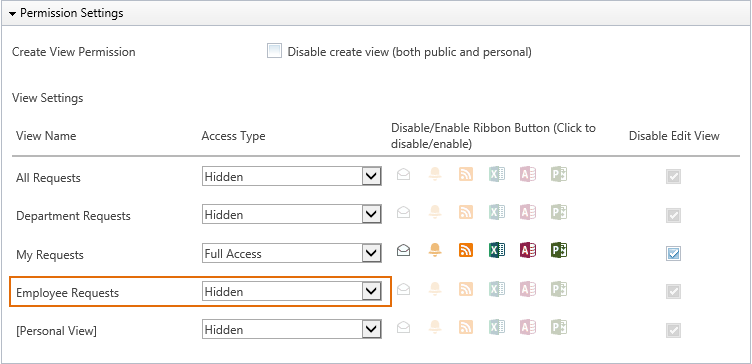
- BoostSolutions
-
Products
-
- Microsoft Teams
- HumanLike Alert Reminder
- View All Apps
- Pricing
- Support
- Company
With Column/View Permission , you can set existing views as visible or hidden in a SharePoint list. But how to set permissions for new views created hereafter? Is there a way that we can set default permissions for views instead of setting permissions individually for every new view created? The answer is yes. Column/View Permission provides a feature which enables you to set default permissions for any new views create in the future, configuring whether the new views are visible or hidden. It frees you from specifying permissions for every new view create hereafter. Besides, this feature not only works with new views but also works with the existing views.
This article will introduce how to configure default permissions for views in a SharePoint list
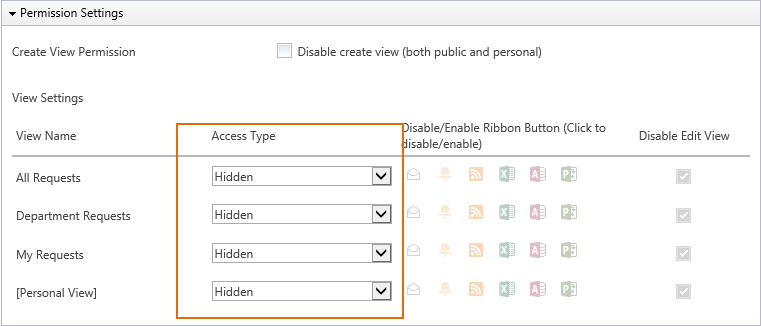
All views are set as hidden by default
And create three views in the Absence Request List, named as All Requests, Department Requests and My Requests.
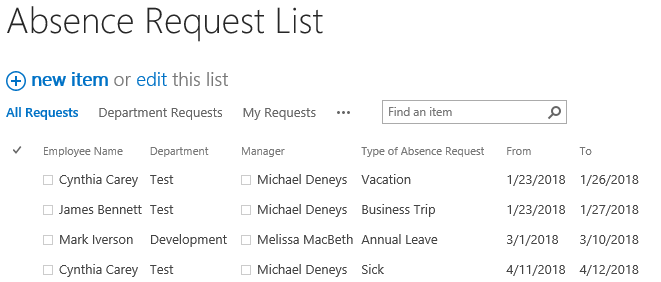
Download the trial version of Column/View Permission, and install it to your SharePoint server.
Navigate to the Staff List prepared above, click List, then click Column/View Permission in Settings group, and then click Manage View Permission.

In the View Permission Settings page, click Advanced Settings on the top right corner.

In the Advanced Settings page, select Stop inheriting setting option. Then the Redirect Page Settings becomes configurable status.
In the Default Settings for View Permission section, select Hidden as following, which means that all new views and any previously existing views will be hidden by default. This will result in all users not having access to any views in this list unless you specifically grant them permissions to access the view(s).

Note that If you choose "visible" as the default settings for view permissions, then all views will be fully visible to all users, unless you specifically configure a permission part to deny them from accessing.
Then, click OK to save the settings.
In the View Permission Settings page, click Add Permission Part to create a new permission part (we call a permission configuration as a permission part), specify a unique name for it.
In Include Users section, input a SharePoint user Cynthia Carey in the Select Users/Groups part as following.
Of course, you can input any SharePoint users, SharePoint groups, Active Directory groups, or users represented by Person or Group fields (such as Created By, Modified By and Assign To) or anonymous users.

Because the default settings for view permission has been set as Hidden in step 5, then in Permission Settings section, the Access Type for all views will set as Hidden by default.

Here, let’s change the Access Type of My Requests view from Hidden to Full Access, which means that user Cynthia Carey can access this view.
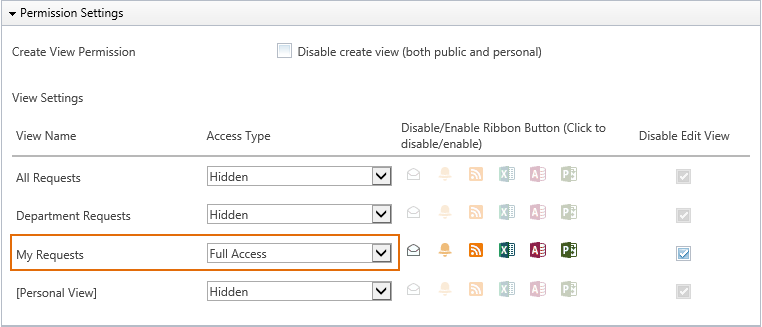
Then, click OK to save all settings for this permission part.
Log in to SharePoint as user Cynthia Carey, and navigate to the Absence Request List list.
User Cynthia Carey can only see My Requests view as following.
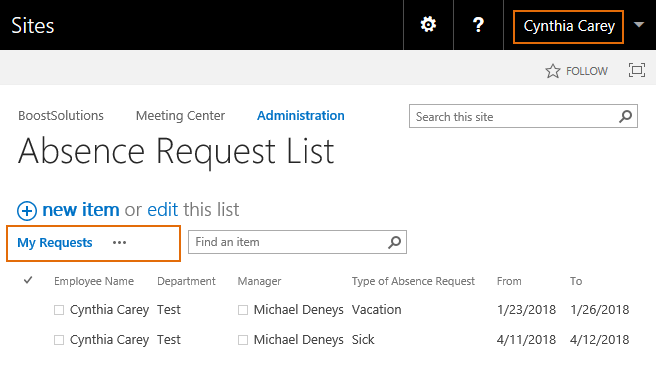
In the Absence Request List, let’s create a new public view named as Employee Requests.
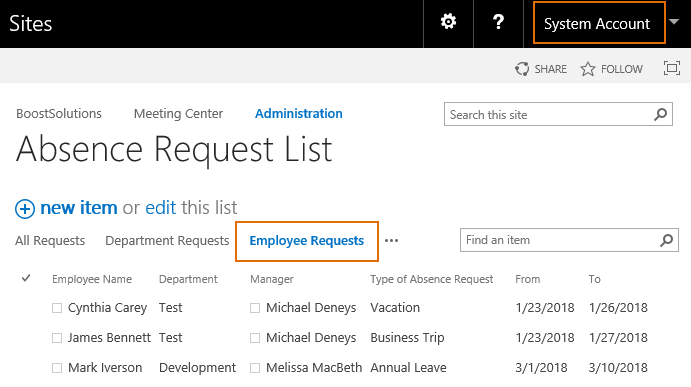
When user Cynthia Carey accesses the Absence Request List, she cannot see the new created view either.

Check the permission part page, and you will find out that the new created view Employee Requests has been set as Hidden by default according to what we have done in step 5.
